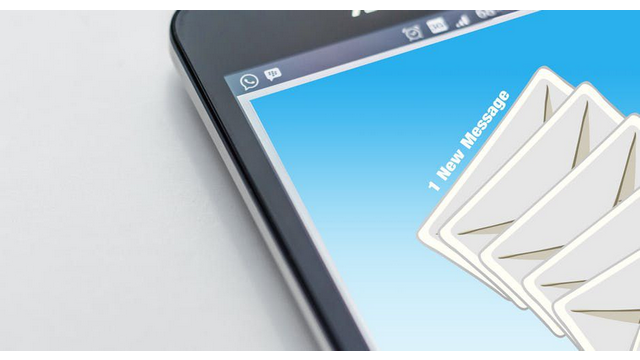
By Gavin Heron, Eco-entrepreneur at Earth Probiotic.
In order to do this you need a “Merchant Code” from your bank.
OK. That should be easy. All we do is apply and hey presto all will be done.
Instead we got caught in email hell (read e-hell for short!). There were lots of people involved in our case. The only problem was that they were all busy cc’ing each other. The result? No-one did anything.
So I had to threaten them with social media!
“This is totally infuriating. Is there not ONE person at the BANK who can take responsibility for this instead of passing the problem to everyone else (isn’t CC a wonderful way to cover one’s backside so one doesn’t have to actually do any work?).
Now I’m sure that all of you are going to get onto the “CC everyone pass the buck to someone (not me) email” fight and not take personal responsibility for anything.
I wait with baited breath.
This is such a brilliant example of how my bank is not helping my business. And the whole email evidence chain is going to make such a wonderful twitter story with @yourCEO (that’s the Bank’s CEO) tagged into the conversation”!
Instant results. And success quickly followed as the “cc-ers” boss got involved and made it happen. So thank you Billy!
But this is not the point of the story. This is a story about email.
We are all stuck in email hell. And most of that hell is of our and our colleagues doing.
Email is great. But when abused is worse than computer generated phone calls from insurance companies. So I thought, in the interests of sustaining sanity (yes it is a sustainability story), that it would be a good time to provide some hints on how to use email and get things done.
10 HINTS ON HOW TO COMMUNICATE THROUGH E-MAILS AND BE RESPECTED AND LOVED.
1/ MAKE YOUR EMAIL SHORT
Email is a tool for action or information. No one likes to read long emails. So make them short and to the point. If you want someone to do something “tell them”. If you are sending information “send it” and tell the recipient why they need to look at the mail.
An easy way to do this is to use short sentences.
2/ DON’T USE CC UNNECESSARILY
cc only people that are relevant and involved in the discussion/subject. Don’t cc. someone just to protect your ‘behind’.
This is the same for “reply all”. Make sure that you only reply to people you directly want to communicate with. Sometimes someone has simply passed on the job. They don’t need to follow the project as they’re no longer involved in it.
3/ SIMPLE GOOD. ‘CREATIVE’ BAD
Use simple text. Don’t put funny effects. Funny effects make you seem unprofessional. Remember email is a tool. Not a creative vehicle. Use plain text. Avoid HTML or other fancy effects (not everyone can read them).
4/ USE EMAIL SPARINGLY
This is obvious. Don’t use email if you can chat to someone. We are all guilty. We send an email to someone just across the room from us. Do this if it is an instruction. But not if it’s simply FYI.
And it’s really not necessary to send emails saying “thanks” or “ok” or “got that” etc. etc. It’s a waste of time. And not necessary. It might seem like good manners to do this. But in the end you’re just wasting someone’s time.
5/ REMEMBER THAT AN EMAIL IS PUBLIC
Emails – like Twitter – have a habit of spreading beyond the people involved. Either by mistake or on purpose. So don’t insult people. Don’t complain about clients or colleagues. Or discuss confidential information. Your email will get out there. Never ever insult someone in an email! (Rather do it to their face).
6/ FORWARD WITH CIRCUMSPECTION
Not everyone will appreciate the joke you received. Some people might even be insulted. So don’t forward. Especially don’t mass forward.
7/ AVOID ATTACHMENTS (ESPECIALLY LARGE ONES)
If you can avoid your recipient having to open up another application then just put the text in the body of your email. This is quicker and easier.
And remember, most servers reject large attachments. So avoid sending large attachments. As a rule anything bigger than 4Mb is a problem. 2Mb is OK. 100kb is best.
8/ FOR MASS MAILINGS USE BCC.
If you are sending something to a large group of people who don’t all know each other send via BCC. That way no-one can see who else has been included. And it also avoids people mining the addresses for other purposes. But most importantly this stops people from automatically clicking the “reply all” button and creating a mass of emailing spam.
9/ DON’T USE CAPS.
CAPS MAKES IT SEEM THAT YOU ARE SHOUTING! Only use CAPS for emphasis. Or for standing out when answering a question.
Remember that most people think that their intention and tone will be understood. But most recipients misinterpret the tone of the message. This leads to conflict and fights. So be careful what you say. And how you say it. Again keep it simple, short and clear.
10/ STAY CALM.
If someone makes you angry, don’t get into an email flame war. Wait 24 hours. And then talk to the person in person.
And finally, be professional and polite. Check your spelling and grammar. Use the person’s name. Just because your email is probably not going to be printed out doesn’t mean you can be sloppy.
